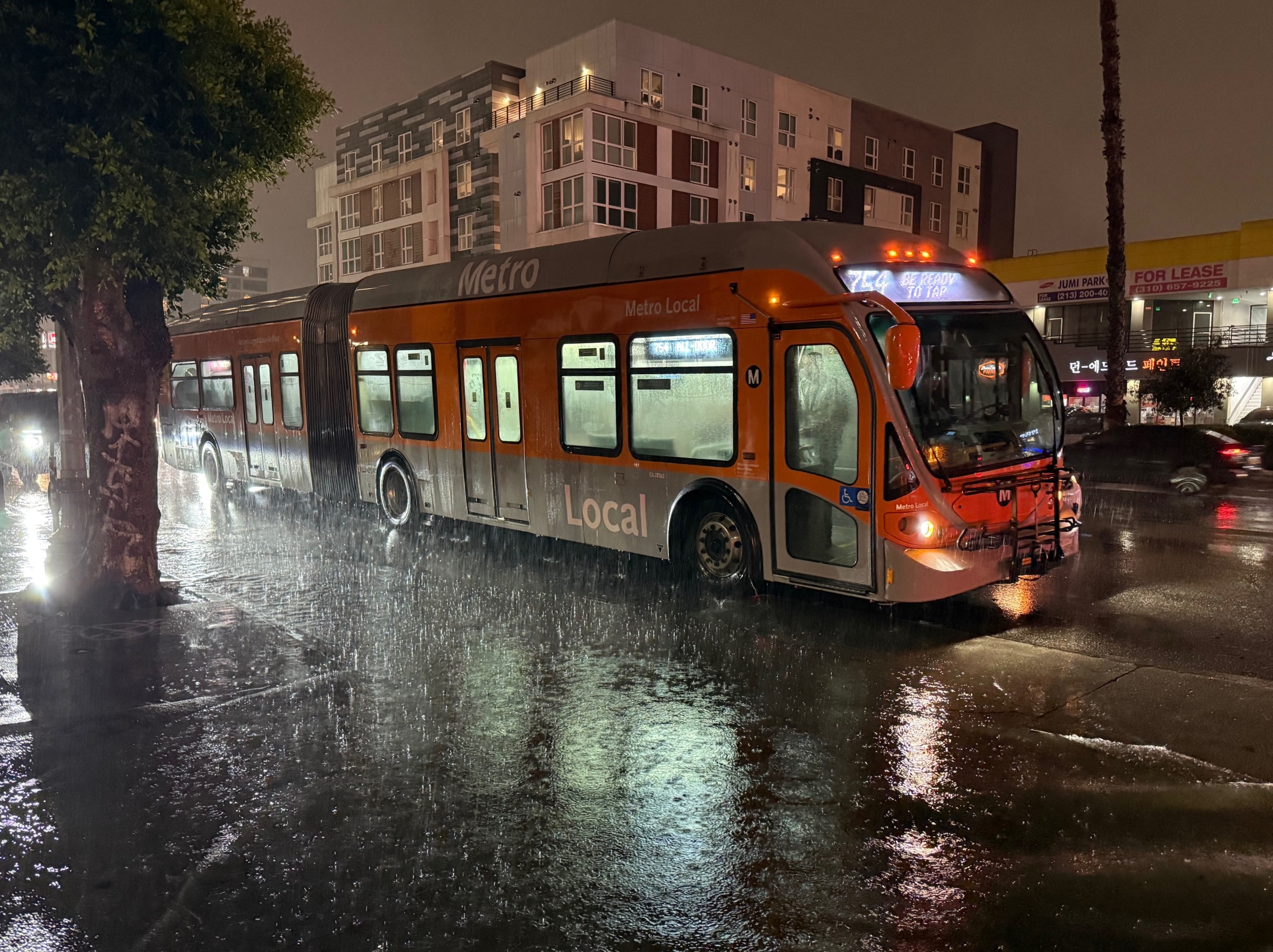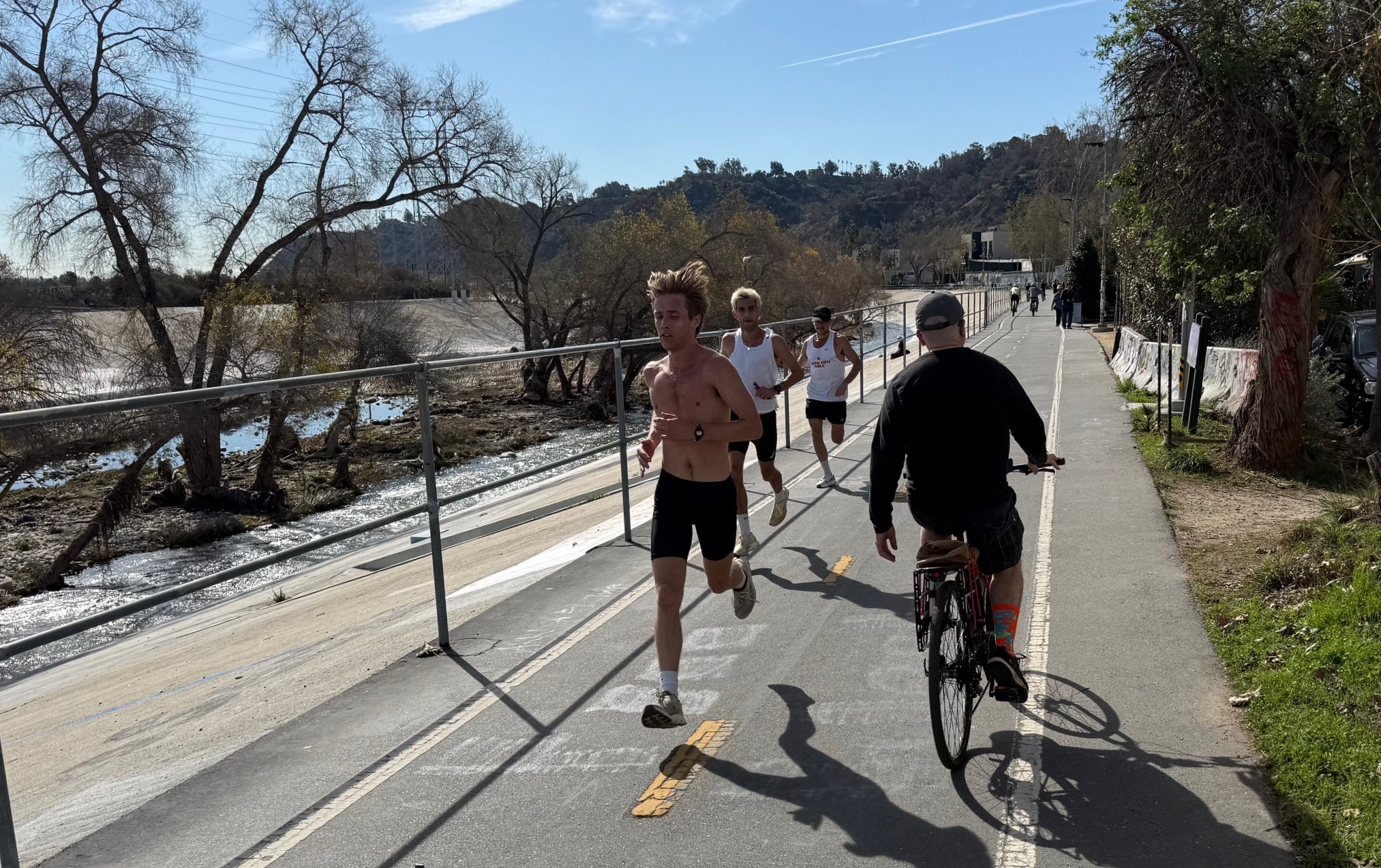Note: GJEL Accident Attorneys regularly sponsors coverage on Streetsblog San Francisco and Streetsblog California. Unless noted in the story, GJEL Accident Attorneys is not consulted for the content or editorial direction of the sponsored content.
The photo above is of a crash that happened recently in Santa Ana. The building in the photo was not very well lit. It also had no guardrail on it, and wasn't painted in bright reflective colors. It certainly wasn't paying attention to the car flying towards it, and made no move to get out of the way.
So was it at fault in this crash? If a recent law passed in the Inland Empire city of Montclair were drawn out to its illogical extreme, then, heck, why not? The city council there seems to think that, because so many pedestrians are being run over by cars, it must be their fault.
So they passed a law that outlaws the use of a phone or wearing earbuds while walking in a crosswalk.
Let that sink in. Pedestrians who are crossing a street could potentially be held responsible for their own injuries if they are hit by a driver, whether they have the legal right of way or not.
What's next? Should Montclair outlaw being blind while walking? Being old and slow? Being in a wheelchair? Being short? Being young?
Pedestrians on phones do not pose a potential danger to people in cars. It's the other way around.
Oh, wait, that's right. There is already a law discouraging distracted driving, so why not even things up, right? Well, at least there's a law against holding a phone while you're talking into it and driving at the same time. You can put it on your dashboard and use the speaker phone, though--despite evidence showing there is little difference between hands-on and “hands-free” distractions while driving.
Despite the difference between driving a two-ton machine and walking.
Oh! The difference is this: a driver, if caught (big if), would pay a base fine for a first-time offense of $20. A person walking, if caught (easier to see so not as big an if), would pay a base fine for a first-time offense of $100.
Sounds even to me!
The Montclair city council ought to be embarrassed for passing this ordinance, and its city manager should spend a little more time doing research before suggesting new laws. He could start here, with this chart showing that drivers can be more likely to hit inanimate objects—like buildings!--than annoying jaywalkers.
This is true in Playa Del Rey, too—see the end of the fifth paragraph in this story.
Or maybe he can start by looking at some of the National Safety Institute's research on distracted driving.
Another resource are the many Streetsblog articles outlining some of the problems with blaming pedestrians, including this one about jaywalking, enforcement, and racism.
Honolulu passed a similar law last summer; San Mateo has discussed an effort to get a similar state law in place. But just because some of the kids are doing it doesn't mean it's a good idea.
A law like this is more likely to cause real harm to people—via profiling, uneven enforcement, and costly fines—than any good it could bring in terms of injury prevention. In fact, it's more likely it could create a much deeper harm to all of us if drivers, and their insurance companies, are handed a new way to escape responsibility when they hit a pedestrian who happens to be breaking this stupid law.
For more, see Angie Schmidt's piece at Streetsblog USA.







